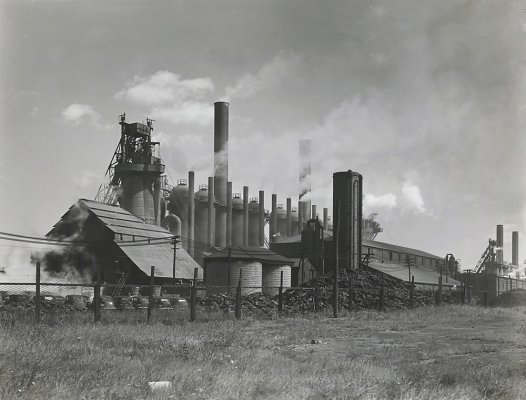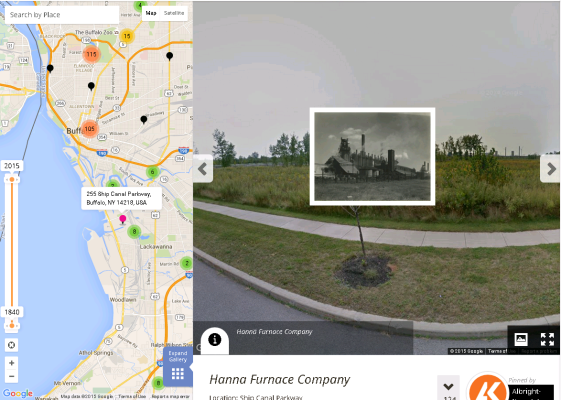The Buffalo and Susquehanna Iron Company was founded in 1889 by industrialists William A. Rogers (1851–1946), Frank H. Goodyear (1849–1907), and Charles Waterhouse Goodyear (1846–1911). The original facility was constructed in 1902 and 1903 by engineer Julian Kennedy. It was an industrial pig iron foundry and mill located at the end of the Buffalo and Susquehanna Railroad line on the Buffalo Harbor. The foundry processed iron ore into pig iron, a primary ingredient in the steelmaking process for the neighboring Bethlehem Steel Mill, as well as other steel and iron works throughout the Northeast.
The demand for the mill’s product quickly grew so great that it outpaced the Buffalo and Susquehanna Railroad Line’s ability to supply the necessary raw materials. As a result, Union Ship Canal, constructed in 1900, facilitated the transfer of materials to and from the numerous Great Lakes freighters operating between Buffalo and ports in the Midwestern United States. Due to the constant demand for product, two additional furnaces were added to the facility in 1910. The company was sold by Rogers, Goodyear, and Goodyear in 1915 to the Hanna Company of Cleveland, and the facility was renamed the Hanna Furnace Company.
The stock market crash in 1929 brought a sudden end to the Hanna Furnace Company’s high-production years. The resulting Great Depression forced the company to merge with the National Steel Company in order to survive. The newly merged company operated on the site until it went bankrupt in 1982. The building was eventually abandoned by National Steel and sold by the City of Buffalo. The majority of the facility’s buildings were demolished in 1983 and 1984. In recent years, the Buffalo Urban Development Corporation has assumed ownership and the former grounds of the Hanna Furnace Company are occupied by commercial properties like the Buffalo Lakeside Commerce Park and the Ship Canal Commons, a waterfront park centered on the Union Ship Canal. The park contains numerous informational plaques detailing the history of the site.

Hanna Furnace Company. Image courtesy of the Albright-Knox Art Gallery Digital Assets Collection and Archives, Buffalo, New York.
For more historical information, visit the Albright-Knox’s channel on Historypin.
